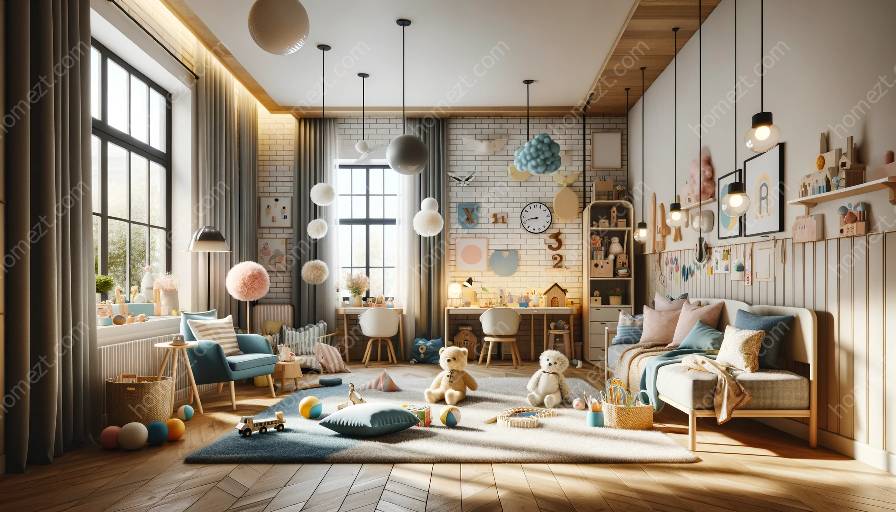When designing a children's room, it's essential to create a space that not only looks beautiful but also promotes physical activity and play. By integrating elements of interior design and styling that encourage movement and creativity, you can create a dynamic environment that supports a child's overall well-being.
Enhancing Movement
One of the key components of promoting physical activity in a children's room design is to enhance movement. This can be achieved through the careful selection of furniture and layout. Consider incorporating items like climbing walls, monkey bars, and balance beams to encourage active play. By providing ample floor space and avoiding clutter, you can create an environment that facilitates running, jumping, and other forms of physical activity.
Creating Zones for Play
Dividing the room into different play zones can encourage a variety of physical activities. For instance, designate an area for active play, such as dancing, tumbling, or yoga. Another zone can focus on imaginative play, featuring a reading nook, art corner, or dress-up area. By delineating these spaces, children can engage in different types of physical activities throughout the room.
Incorporating Safe and Stimulating Elements
When designing a child's room, safety is paramount. Ensure that all furniture and play equipment are age-appropriate and securely anchored. Soft, padded flooring can protect against falls, while incorporating stimulating elements like sensory walls, interactive play panels, and sensory-friendly lighting can promote movement and engagement.
Utilizing Multi-Functional Furniture
Opt for multi-functional furniture pieces that serve a dual purpose. For example, a bunk bed with a slide can provide both a place to sleep and an opportunity for active play. Similarly, a table with adjustable heights can accommodate seated activities as well as standing projects, promoting movement and adaptability in the room's design.
Encouraging Creativity
Children's room design should also foster creativity, as imaginative play often involves physical movement. Incorporate elements like chalkboard walls, magnetic boards, and open shelving for art supplies to inspire creative expression. Providing space for building blocks, puzzles, and other hands-on activities can further stimulate cognitive and physical development.
Engaging with Nature
Bring the outdoors inside by incorporating elements of nature in the room. Consider adding a small indoor garden, potted plants, or a nature-themed play area. By connecting children to the natural world within their living environment, you can promote physical activity and a deeper appreciation for the outdoors.
Lighting and Color Palette
The use of lighting and color can also impact a child's physical activity and play. Natural light promotes energy and alertness, while bright, vibrant colors stimulate creativity and movement. Consider utilizing adjustable lighting options and incorporating a playful color palette to energize the space while creating a visually dynamic environment.
Conclusion
Overall, children's room design plays a crucial role in promoting physical activity and play. By integrating elements that enhance movement, create play zones, prioritize safety, and inspire creativity, you can craft a space that supports a child's physical, cognitive, and emotional development. Embracing innovative interior design and styling concepts, you can create an environment that encourages children to be active, imaginative, and engaged within their own living space.


























